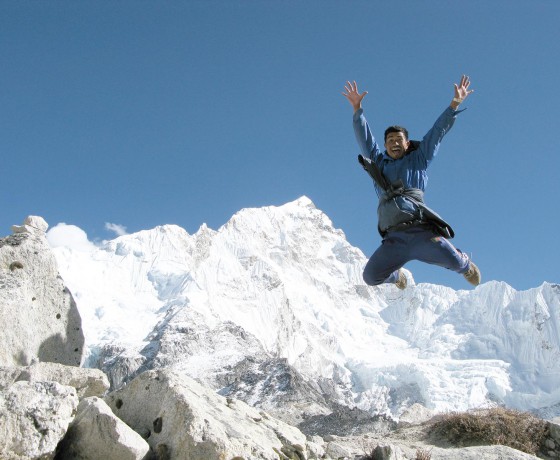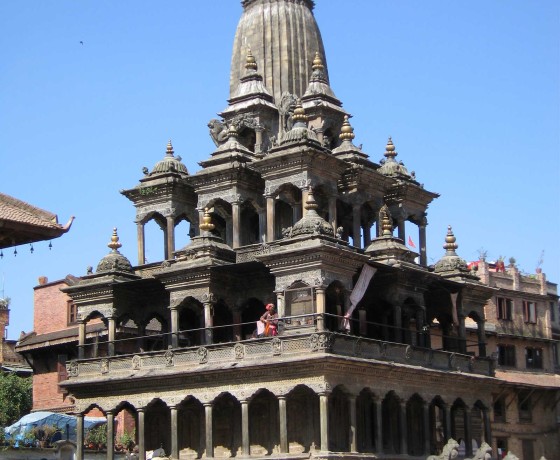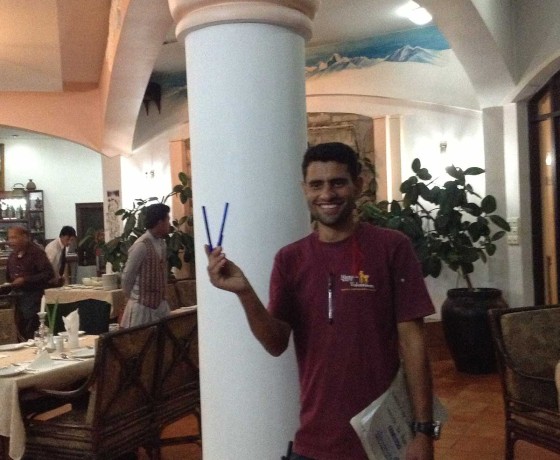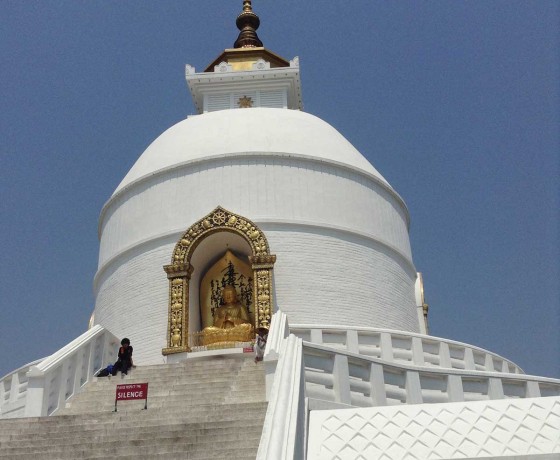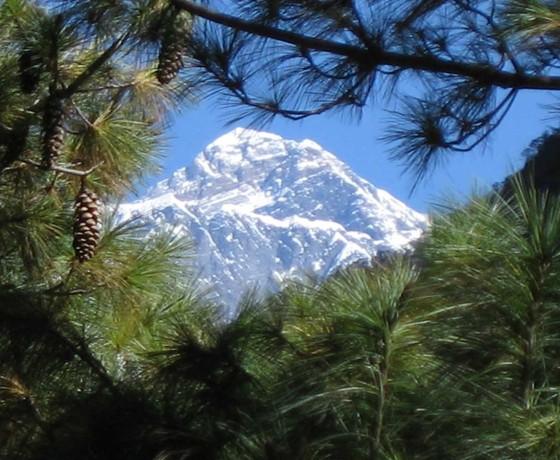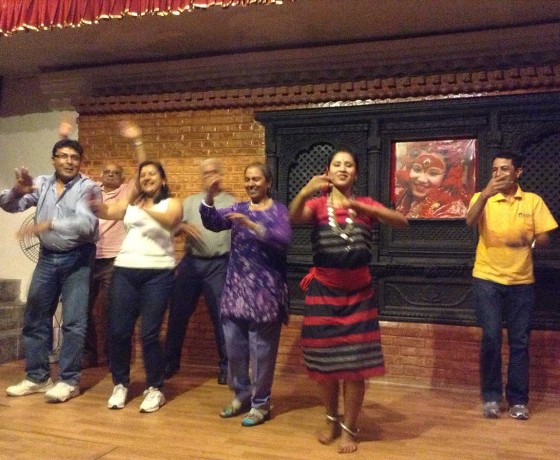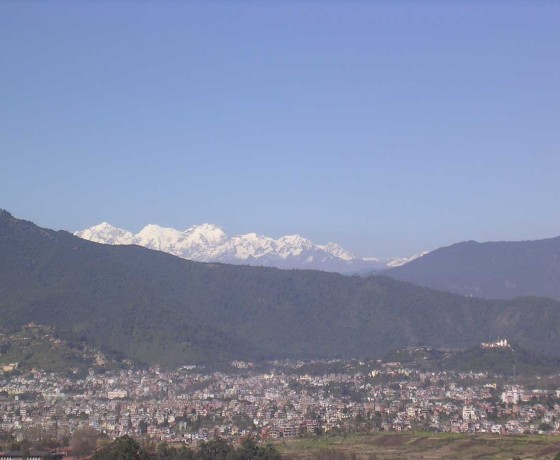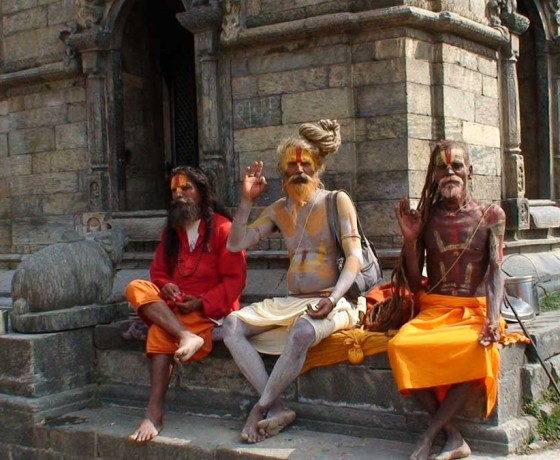Lobuche East & Everest Base Camp Trek
Lobuche East and Everest Base Camp trek – 20 days
(B = Breakfast, L = Lunch, D = Dinner)
The scene for the splendours to come as you make your way up Namche bazaar the colourful centre of Sherpa life. After acclimatisation climate by spending time exploring this bustling, village, it is timed to trek up through the friendly Sherpas settlement and past active Buddhist monasteries. From here, you will head for the main Everest trial and the rocky summit of Kalapattar (18,193 ft), and its unsuppressed close a view of Everest and its giant neighbours. We later come back to Lobuche for the final Lobuche east climb 6119-mt climb to have a very close view of Everest. After accomplish this feat, you will trek back through the Khumbu to Lukla for a flight back to the Kathmandu for some city adventures to match your trekking highs.
Day 01:
Arrival day, welcome at airport by garland, check into a Hotel rest day.
Day 02:
Another brand new day start with special breakfast and leave for full day sightseeing in Kathmandu valley. The Hindu temple complex at Pashupatinath (a UNESCO world heritage site) and the biggest Buddhist stupa at Boudhanath. Also, visit The Kathmandu Durbar square and the Monkey Temple at Syambhunath (2000 years old temple, stay at Kathmandu hotel, B
Day 03: Kathmandu – Lukla (2880m) – Phakding (2740m). (5-hour trek) mix of up and down but mostly easy walk.
Morning flight to Lukla(Flight not included) we watch the rugged foothills give way to the snowline of the Himalaya; many of the world’s highest mountains, including Kanchenjunga, Lhotse and Makalu (the world’s 3rd, 4th, and 5th highest respectively) may sometimes be seen from the window of the plane. Once we are in Lukla Surprisingly, this high-altitude trek begins by descending to the river at Phakding. We stay there. B, L, D
Day 04: Phakding – Namche (3445m). (5-6 hour trek) moderate walk but after lunch uphill.
The first day may have been surprisingly long for some, but stay at Phakding allows us to begin the ascent to Namche Bazaar first thing in the morning. At about halfway up the hill, a gap in the trees allow us to spy Everest for the first time. If the weather is clear, the top of the South-West Face will be just visible behind the long Lhotse-Nuptse ridge. A plume can often be seen stretching away from the very summit.
Namche is the most prosperous and the largest town in the Khumbu. A bazaar is held here every Saturday. The wares on display include meat, grains and vegetables, tennis shoes and trinkets as well as hand woven aprons and Tibetan boots. The Sherpas play host to trader from the foothills, as well as Tibetans from over the border. Thamserku (6648m), Kwangde Ri (6187m) and Khumbila (5707m) surround the natural bowl that Namche sits in. B, L, D
Day 05: Namche – Rest/acclimatization day.
We take the day off to allow our bodies to adjust to the rarefied atmosphere before ascending to higher altitudes. The secret of safe acclimatization is to ‘climb high, sleep low’ so it is safe for the more energetic amongst us to hike up the hill behind Namche to the airstrip at Syangboche, or stroll across to the museum behind the police post. Others may prefer to ‘chill out’ and visit one of the lodges for a freshly baked cinnamon roll. Namche is a busy and bustling trading place and there is always plenty going on. B, L, D
Day 06: Tyangboche (3,800m): (5 hour trek) down and uphill.
From Namche we continue our trek to Phunki and Tyangboche monastery for one of the most magnificent views in the world; an awe-inspiring panorama of Himalayan giants: Kwangde, Tawache, Everest, Nuptse, Lhotse, Ama Dablam, Kategna and Thamserku. B, L, D
Day 07: Dingboche (4,300m). (7-8 hour trek) up hill.
Cross the Imja Khola and continue through terraced fields and rolling pastures where yaks graze to Pangboche (3,860m). B, L, D
Day 08: Dingboche (4,300m): Rest day.
Rather than just sitting around in the tents or teahouse, we encourage you to attempt one of two hikes. The shorter option ascends the hill immediately behind Dingboche, to drop steeply down to Periche. The Himalayan Rescue Association operates a medical post here and the western doctors conduct excellent seminars on Altitude Mountain Sickness (AMS) here on most afternoons or longer option is to trek up the Imja Tse valley towards Island Peak. The views of Lhotse, Ama Dablam / Cho oyu from here are outstanding. After a few hours Chukung is reached, and after a rest return down the valley. B, L, D
Day 09: Lobuche (4,900m): (6-7 hour trek) up hill.
The trail climbs through a grass-carpeted valley to Khumbu Glacier and reaches Dughla – Lobuche. B, L, D
Day 10: Lobuje – Kala Pattar (5545m) – Gorakshep. (7 hour trek) uphill.
A long day and an early start. We trek along the rough path along the side of the Khumbu glacier to the tea shacks at Gorak Shep. Behind rises the attractive 7000m peak of Pumori, which dwarfs our trek’s summit of Kala Pattar. The route up is straightforward and takes most people between 90 minutes and 2 hours. All the peaks – Everest, Lhotse, Nuptse, Changtse, Ama Dablam and scores of other lesser peaks can be seen from this wonderful vantage point. B, L, D
Day 11: Gorak Shep – Everest Base camp 5,364mt. – Lobuche) uphill in the morning and on a way back downhill.
This is the day! You will re-pack your pack this morning before breakfast and then put a smile on your face….and get ready for the easy trek from Gorak Shep to Everest Base Camp. You may have a special token you would like to place there…prayer flags are popular, or a stone, a crystal, a photo of a loved one….anything that has meaning to you, as long as it’s eco-friendly. The base camp has been cleaned up nicely by some expeditions who came specifically for that purpose so the icefall and glacier are in pristine condition. The elevation here is 5,364 meters, 17,598 feet. Enjoy you lunch at Base Camp and take lots of photos to commemorate the moment before hiking back out to Gorak Shep. You will stop to pick up any of your personal belongings you have left at the guesthouse and begin the trek back out to Lobuche. Overnight at Lobuhe, guesthouse. B, L, D
Day 12: Lobuche to High Camp (5,400m/17,712ft): 3-4 hours.
After breakfast From Lobuche, we trek towards Lobuche base camp. After a while the trail on relatively flatter plane, with lots of rocky and steep. We move forward along the Lobuche Glacier while enjoying great views of Ama Dablam, Cholatse, Pokalde, Thamserku, Kantega and other Himalayas. From the base camp, we continue on a rocky moraine path to reach the High Camp. After reaching there, we set up our camp, take lunch and rest. For the climb, we usually will be climbing on rock surface for up to around 5770m. After that, we climb on ice and use ropes when necessary. However, the use of the rope and the length depends upon the season and the crevasses. Fixed rope is used most of the times whereas manrope is used when required. The climbing leaders will decide what is best for when. Overnight in Lobuche East High Camp.
Pre-Climb Training: Our guides will provide training on peak climbing techniques and the proper ways of using climbing gears such as the ice axe, climbing boots and crampons, harness, ascender, etc. The training will also include using ropes to go up and down. We strongly believe that the training experience will boost your confidence and climbing skills to increase the chances of scaling the summit as well as to fully enjoy the experience. B.L.D
Day 13: Lobuche High Camp to Summit (6119m/20,070 ft) and back to High Camp: 9-10 hours.
We wake up early today at around 12 to 1 am and have our breakfast before beginning our climb. It is important we reach the summit before noon because in the afternoon the strong winds in the high lands might become a barrier for a successful summit. We will most likely be walking on rock surface up to around 5700m after which we climb on ice. We use both fixed rope and manrope as per our leader’s instruction. The climbing surface as well as the length of the rope and depends on the time of the season and the crevasses. Lobuche East offers more panoramic views of the mountains than any other trekking peak. From the summit, you get to enjoy magnificent views of Everest, Lhotse, Nuptse, Ama Dablam, Cholatse, Pumori, and many more. We spend some time at the summit celebrating and taking pictures, then we get back to the High Camp again for an overnight stay.
B.L.D
Day 14 Extra day in case. Rest day.
Extra day for incase like bad weather for climbing. Setting aside, an extra day will ensure that even if we were to face a day’s set back, the trip will continue thus guaranteeing a successful climb.
B.L.D
Day 15: Lobuche High Camp to Pangboche (3930m /12900 ft): 8-9 hours.
After taking our morning breakfast, we trek downhill from Lobuche High Camp then trek down to Phireche.
Included meals: Breakfast Lunch Dinner.
Day 16: Phireche to Deboche/Tyangboche B.L.D
Day 17: Trek to Manjoo B.L.D
Day 18: Manjoo – Lukla (2880m). (5-hour trek)
Most people head towards Lukla with a heavy heart. There is something very special about the setting, the villages and the people of the high Khumbu hills and valleys and our memories help us up the deceptively long, final climb into Lukla. Our campsite and house are well located and offer a good final resting spot. B, L, D
Day 19: Lukla – Kathmandu.
Another chance to enjoy this great flight. Please note that flights into Lukla (flight not included)are sometimes delayed due to un-flyable conditions either in fog-bound Kathmandu or in windy Lukla; be reassured that our staff in Lukla and in Kathmandu will be doing everything possible to minimise the inconvenience caused if this happens. Your patience in the sometimes-trying circumstances, which can occur, will be greatly appreciated.
Upon arrival back in Kathmandu, you will be met by our Earthbound Expeditions representative and transferred to the Hotel. In the evening, the management will host a farewell dinner with cultural show. B, D.
Day 20 Final Departure, transfer to airport. B
*****TOUR END*****
The cost of the trip: GBP £2070 per person.
Please Contact Us for more departure dates.
The Cost Includes:
- Accommodation Hotel in Kathmandu 3 star hotel, twin-sharing rooms and in trek simple lodges.
- Full board meals (breakfast, lunch and dinner and 3 times tea) as mentioned above in the trek.
- One professional guide and one porter for the trek with their meal, Insurance.
- All National park fee (USD 38).
- Kathmandu sightseeing, airport pick up and drop, all ground transport
one night cultural show and dinner. - Down jacket and sleeping bag for trek if necessary.
The Cost Does Not Includes:
- International flight to and from Kathmandu.
- Bar bills (coca cola, mineral water etc.), food in Kathmandu, while not mentioned.
- Personal Insurance & emergency rescue charges if necessary.
- Domestic and international flight.
- Extra porter & transport charges in the event of landslides.
- Other personal expenses, airport tax, Kathmandu city entrance fees.
- Personal, medical and evacuation insurance Laundry, cost raised by re-routing, cancellation, political disturbance etc.
- Tips any other expenses, which are not included.



